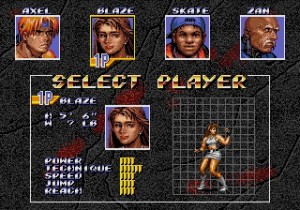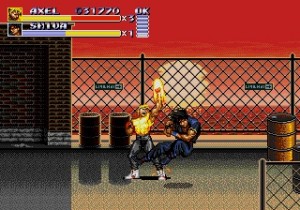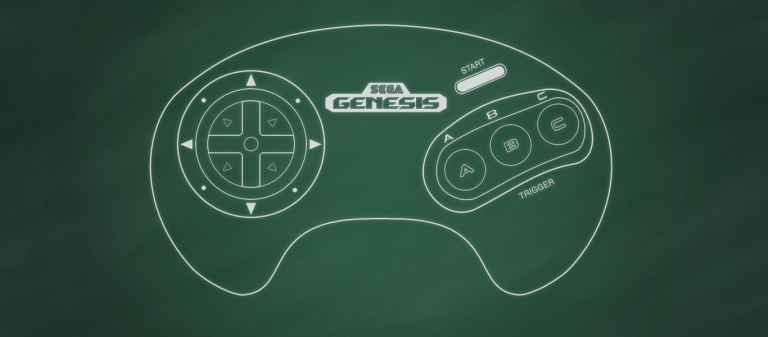 Lesson Two: Multiple Characters Multiply Replay Value
Lesson Two: Multiple Characters Multiply Replay Value
Sonic and Knuckles, a physical expansion pack to Sonic the Hedgehog 3, remains the most monumental content update in the history of videogames in my opinion. One of the reasons why is that the title characters played so uniquely. By that point in the series, Sonic gained different special attacks when equipped with various energy shields, and naturally he was the faster of the two; Knuckles laboriously climbed up walls and busted through things with his fists. SEGA took the concept so far that your path through a level depended on which character you played as, essentially shaping the entire experience around each hero’s particular quirks. If you factor in Tails and his flying ability, that made three distinct playing styles you could adopt. Thus, I remained loyal to a giant game three times as long as was probably healthy, ignoring whatever else happened to be on the market all the while.
Hard Corps gave you four player characters to toy with, each with his or her own exotic collection of weaponry. Konami did a really ingenious thing in spreading the traditional Contra weapons across characters, putting the series veteran a little off balance no matter who you played as and giving the game a very different feel each go around. And if you multiply the game’s four paths by four characters…wow. I didn’t even have enough time to play through every variation this game offered, and that’s saying a lot for a shoot ’em up!
 Streets of Rage 3 remains the champion of character rosters. Axel was your slow-but-powerful boxer, Blaze had all the cool moves, Skate earned his name by zipping around the screen, and Dr. Zan felt like the stiff cyborg he was supposed to be. There were even a few secret characters, one of them a boxing kangaroo you could rescue from his deranged clown master if you were good enough. Let me say that again — this game let you play as a freaking kangaroo. How awesome is that? Each character had completely different regular attacks, grapples, and special attacks, making every playthrough fresh. It wasn’t until the twilight of my Genesis gaming years that I realized you could push each character’s abilities a little further if you were especially skilled, but that’s for the next lesson.
Streets of Rage 3 remains the champion of character rosters. Axel was your slow-but-powerful boxer, Blaze had all the cool moves, Skate earned his name by zipping around the screen, and Dr. Zan felt like the stiff cyborg he was supposed to be. There were even a few secret characters, one of them a boxing kangaroo you could rescue from his deranged clown master if you were good enough. Let me say that again — this game let you play as a freaking kangaroo. How awesome is that? Each character had completely different regular attacks, grapples, and special attacks, making every playthrough fresh. It wasn’t until the twilight of my Genesis gaming years that I realized you could push each character’s abilities a little further if you were especially skilled, but that’s for the next lesson.
Lesson Three: Give Players Something Really, Really Ridiculously Cool to Strive For
I’m compelled to report on Game Center and OpenFeint integration because these are expected nowadays, but if I may be completely honest: I’m underwhelmed with achievements as they’re often presented on iOS. Every time I pull off something noteworthy and a popup tells me I’ve added a new bragging right to my Game Center history, I kind of stare blankly at it and say, “Thanks…I guess?” Don’t get me wrong — friend lists, multiplayer matchups and leaderboards have great utility, but the achievements themselves just don’t get me excited like the gameplay rewards I grew up with.
 I tell you, every successful chaos emerald hunter remembers where they were, and what expletive they dropped, when they first witnessed Sonic turning into Super Sonic in Sonic the Hedgehog 2. A lot of blood, sweat, tears, and gnashing of teeth went into that tough-as-nails tunnel minigame, and the reward was over 9000 to match. The designers at SEGA had to figure out some way of upping the ante in Sonic 3 and Sonic and Knuckles and once again outdid themselves. The introduction of Hyper Sonic was tacky enough, but the apocalyptic showdown in outer space that came with it was a memorable treat for the expert player.
I tell you, every successful chaos emerald hunter remembers where they were, and what expletive they dropped, when they first witnessed Sonic turning into Super Sonic in Sonic the Hedgehog 2. A lot of blood, sweat, tears, and gnashing of teeth went into that tough-as-nails tunnel minigame, and the reward was over 9000 to match. The designers at SEGA had to figure out some way of upping the ante in Sonic 3 and Sonic and Knuckles and once again outdid themselves. The introduction of Hyper Sonic was tacky enough, but the apocalyptic showdown in outer space that came with it was a memorable treat for the expert player.
Hard Corps didn’t really do much in this area. I seem to recall that score thresholds helped keep the player alive through 1-UP rewards but that’s a well-worn genre tradition. Linking performance metrics to the story branches, now that would have been delicious: imagine if shooting accuracy determined whether Deadeye Joe survived to pop out of his exoskeleton after the first boss battle, and the player being ushered one way or the other based on that.
 Streets of Rage 3 did have something special in store for the expert player. As you reached certain high score thresholds without losing a life, something strange and wonderful would happen: your character would start unleashing cans of whoopass you didn’t even know they could muster! The higher you scored on your current life, the more extreme this effect would become, indicated by little gold stars below your character’s health bar. Not that this necessarily made the game too easy for already skilled players: the more your character evolved, the more open you’d be to enemy counter attacks if you failed to master these on-the-fly changes. Getting ahead of yourself and losing a life would dock one of those precious performance stars; the quest to get it back could be utterly addictive. It was one more layer of variation on the main formula and that made it valuable.
Streets of Rage 3 did have something special in store for the expert player. As you reached certain high score thresholds without losing a life, something strange and wonderful would happen: your character would start unleashing cans of whoopass you didn’t even know they could muster! The higher you scored on your current life, the more extreme this effect would become, indicated by little gold stars below your character’s health bar. Not that this necessarily made the game too easy for already skilled players: the more your character evolved, the more open you’d be to enemy counter attacks if you failed to master these on-the-fly changes. Getting ahead of yourself and losing a life would dock one of those precious performance stars; the quest to get it back could be utterly addictive. It was one more layer of variation on the main formula and that made it valuable.


